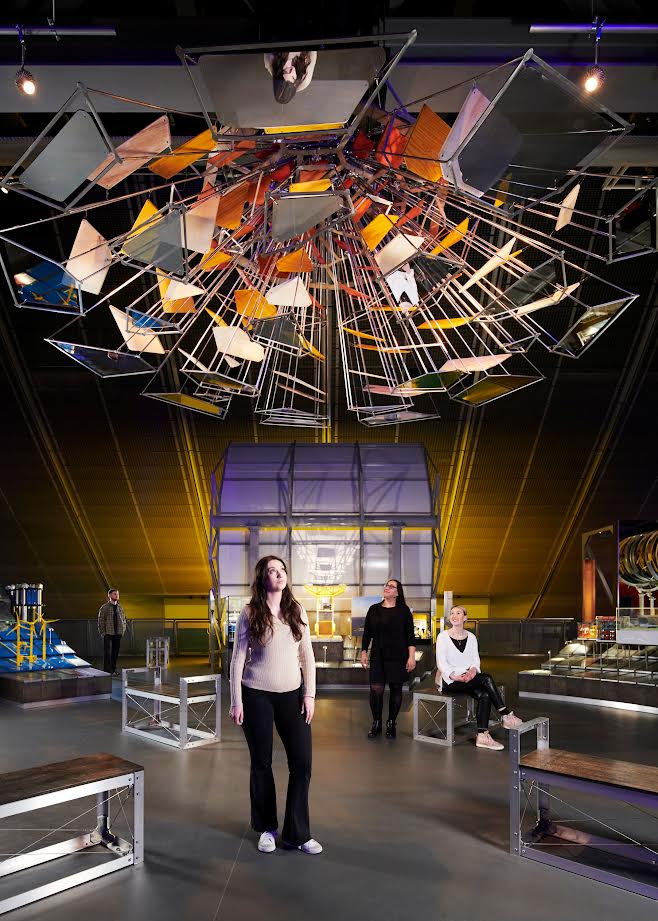
London, Energy Revolution: The Adani Green Energy Gallery has reached a remarkable milestone. Since its launch at the Science Museum in March 2024, this award-winning, free-to-visit gallery has welcomed over one million visitors.
The gallery focuses on one of the greatest challenges of our time: the rapid transformation of energy systems and the urgent need for decarbonization to mitigate climate change. It showcases unique historical and modern objects, engaging digital displays, and specially designed models that collectively illustrate how human imagination and innovation have shaped the past, present, and future of energy systems.
Popular among families and school groups alike, the gallery features technical projects from the UK and abroad, such as hydrogen power in Orkney, terracotta air-cooling facades in India, and solar farms in Morocco. Over 10,000 students have visited the gallery as part of educational trips.
Sagar Adani, Executive Director of Adani Green Energy, said, “We are proud that Energy Revolution: The Adani Green Energy Gallery has inspired one million people so far and sparked discussions on sustainability and innovation. At Adani Green Energy, we believe a sustainable future is built on bold innovation and collective effort. This milestone represents our shared commitment and demonstrates how education can drive meaningful change. We congratulate the Science Museum Group on this achievement and are proud to support a gallery that not only sparks curiosity but also aids in developing solutions for a cleaner, stronger world.”
Sir Ian Blatchford, Chief Executive and Director of the Science Museum Group, added, “We are thrilled to have welcomed one million visitors to this extraordinary gallery. It encourages curiosity and initiates discussions on the need to generate and use energy more sustainably. Reaching this milestone is a testament to the gallery’s award-winning design and the stories behind its remarkable exhibits. We are grateful to Adani Green Energy for their generous sponsorship, which made this gallery possible.”
Designed by architects and design studio Anon Works, the gallery recently received the Retrofit and Reuse Award from Architects Journal for its sustainable design and installation approach. Over 200 redundant metal shelving units from the museum’s old object store were repurposed to display exhibits. Aluminum, chosen for its recyclability, and energy-efficient LED lighting were extensively used, helping reduce carbon emissions associated with construction and operation.
The gallery is structured into three sections to explore the century’s biggest challenge: energy transformation and climate balance.
Future Planet: Visitors learn how climate scientists use mathematics and advanced computer models to understand Earth’s changing climate. Interactive exhibits, developed with the UK Met Office, demonstrate potential future weather and climate scenarios. Instruments from ocean, land, air, and space studies—including an air-sampling flask based on Charles David Keeling’s design for measuring atmospheric CO₂ levels and a satellite-based device measuring sea surface temperature—are displayed here.
Future Energy: Showcases low-carbon technologies reshaping energy production and usage, along with rare historical artifacts, such as the 1897 Brough Electric Taxi of London, cables from the world’s first public electricity network in 1882, a 5-meter parabolic solar trough mirror, a 7-meter tidal turbine blade used near Orkney in 2016, and the first-ever zero-energy thermonuclear assembly from the late 1950s. Models of Rolls-Royce SMR small modular nuclear reactors and a real (non-radioactive) UK nuclear waste container are also displayed.
Our Future: Highlights children’s creative ideas on future energy solutions, complemented by expert responses. A decarbonization tracker, updated annually, shows the UK’s progress on its low-carbon journey.
At the center of the gallery stands ‘Only Breath’, a dynamic sculpture blending science and art, expanding to nearly five meters in diameter. Created by artists Alexandra Carr and Colin Rainey at Torus Torus Studios, it is made from reused glass, recyclable stainless steel, and wood from fallen trees, symbolizing nature-inspired technological change.
Energy Revolution: The Adani Green Energy Gallery is supported by Adani Green Energy, one of the world’s leading renewable energy companies. Opened to the public free of charge on 24 March 2024 on the second floor of the Science Museum’s West Hall, the gallery continues to inspire curiosity and educate on sustainable energy solutions.